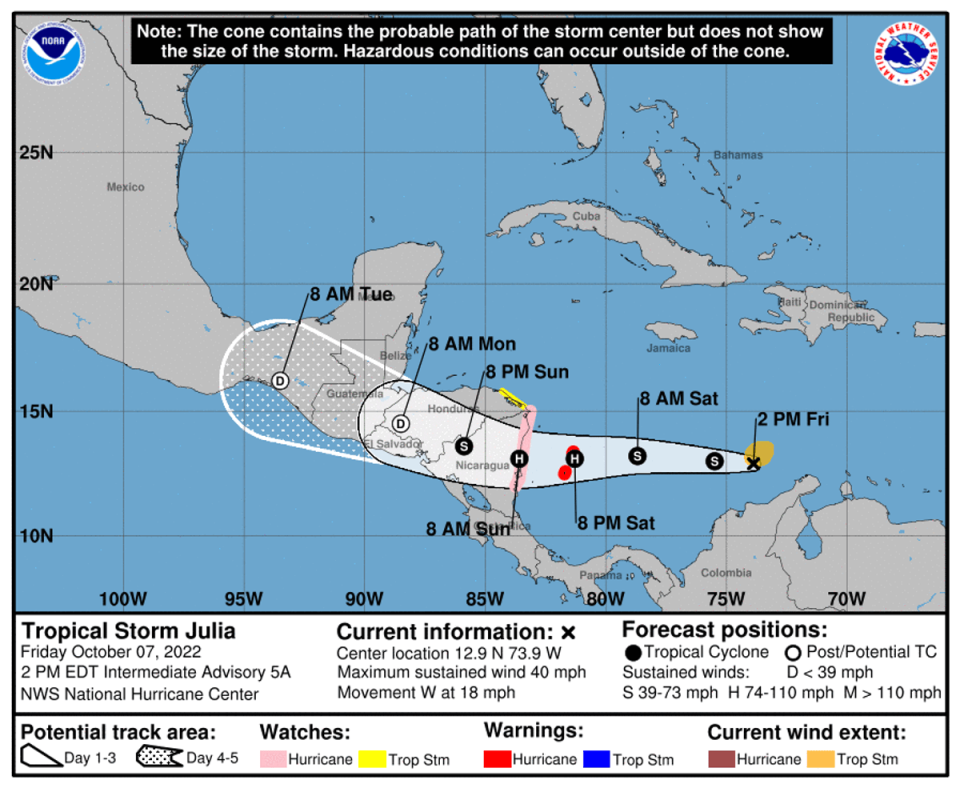Hurricane Julia expected to hit Central America this weekend

Tropical Storm Julia has officially formed in the Caribbean and is on track to hit Nicaragua as a hurricane by Sunday.
The storm will likely hit as a Category 1 storm, with wind speeds up to around 86 miles per hour (138 kilometres per hour), and then track westward toward parts of Honduras, El Salvador, Guatemala and southern Mexico.
Parts of Central America will see between five to 10 inches (13-25 centimetres) of rainfall, with isolated areas receiving up to 15 in (38 cm), the National Hurricane Center warns.
“This rainfall may cause life-threatening flash floods and mudslides through this weekend,” they add.
Storm surge could reach up to six feet (1.8 metres) along the Nicaraguan coast as the storm makes landfall.
A hurricane warning is in effect for San Andrés, Providencia and Santa Catalina Island, all parts of Colombia off the eastern coast of Nicaragua. A hurricane watch, meaning a hurricane’s potential arrival a bit later, is in effect for part of the Nicaraguan coast up to the border with Honduras.
After Monday, the storm’s path is more uncertain, potentially moving north toward the Gulf Mexico near the Yucatán peninsula or westward into the Pacific Ocean.

Despite getting off to a slow start, the 2022 hurricane season has kicked into high gear. Julia is the 10th tropical storm, and will likely be the fifth hurricane, to form in the Atlantic so far.
While hurricanes are not likely to become more frequent in the coming decades, they are likely to get stronger, on average. As the planet heats up from the climate crisis, ocean surface water temperatures would get warmer – creating some of the perfect conditions for hurricanes to quickly strengthen into monster storms.
Hurricane Ian, for example, which whacked into Cuba, Florida and South Carolina last week leaving more than 100 people dead, quickly intensified from warm waters in the Caribbean and Gulf of Mexico.
A United Nations climate science panel has found that the percentage of tropical cyclones reaching Category 3 status or higher has been increasing over the past 40 years.

